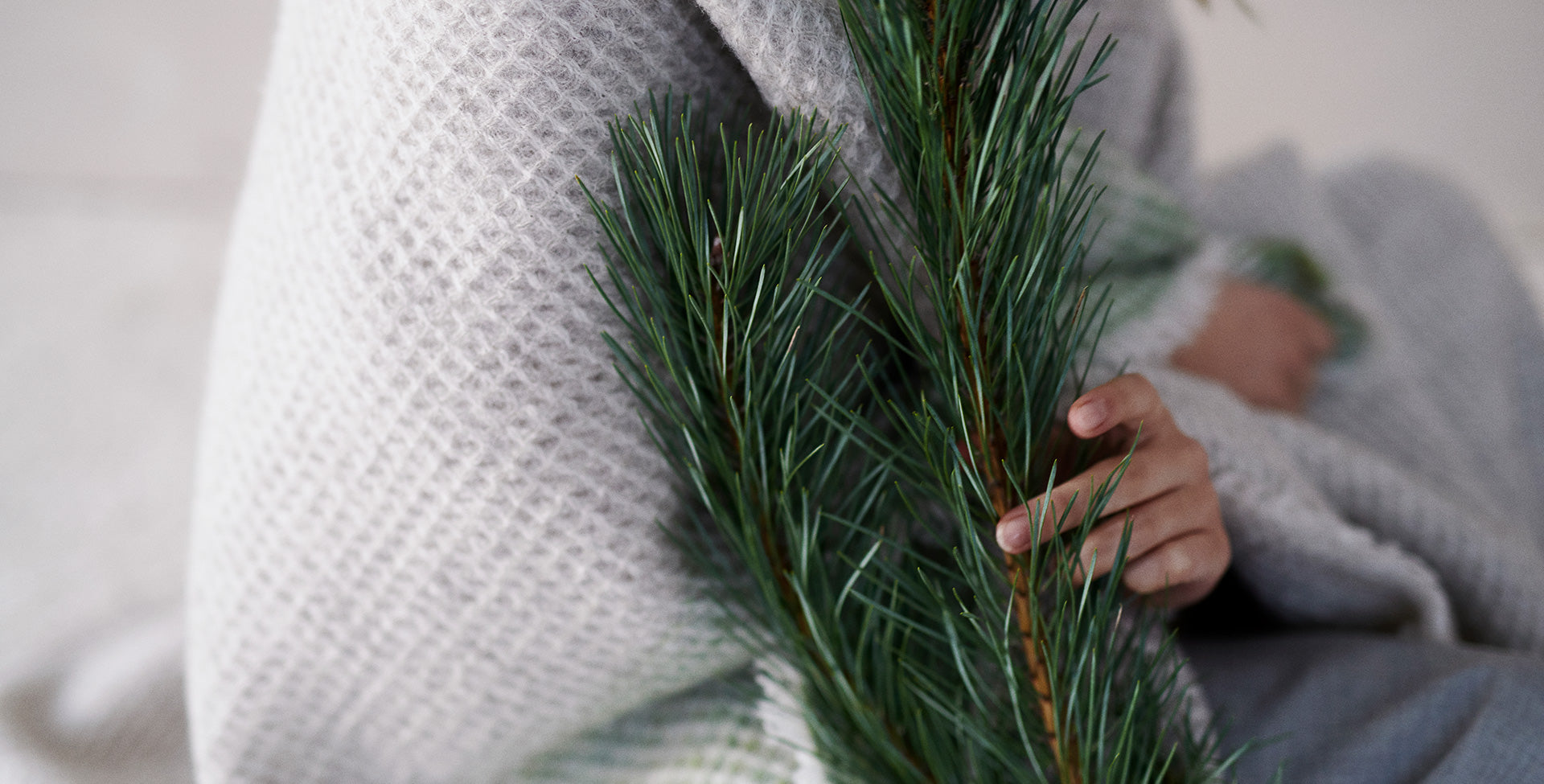Our ecological production process - Bonden's products are designed to return to nature
Our products are special because they are designed from the ground up to be upcycled. Upcycling means transforming textile waste into something higher value. The raw materials used in our products can be reused (upcycled) at the end of their lifecycle. In finishing and dyeing, we minimize the release of harmful chemicals into the environment. That's why we don't use blended materials in our wool and linen products that can't be separated from pure raw materials in recycling. Blended wool or linen must be torn up as insulation material in recycling (recycled) instead of serving as a reusable and repurposed almost virgin raw material (upcycled). Our goal is to collect wool textiles at the end of their lifecycle and design new products from them. By doing this, we can use natural resources in a smarter way than before. At the end of their life cycle, Bonden’s products will return safely to nature.
We want to understand the backgrounds of the materials we use and their effects on the climate and people, as we are responsible for the choices we make. That's why we use only natural raw materials such as Finnish sheep wool and now also European linen. We ensure that our products are manufactured locally in an area with material expertise and capabilities to produce products ecologically, ethically, and sustainably. We also take into account the use of surplus scraps and cutting waste in product design. This waste is used to create our ZERO - WASTE collection. This collection includes unique patchwork pillows and blankets made from surplus scraps that can be combined with our other textiles. They also add a personal touch to Bonden's collection, allowing you to create playful and stylish combinations.

Made by local artisans
Our products are manufactured locally in an area with a special material expertise and capabilities to produce products ecologically, ethically, and sustainably.
Our wool products are manufactured in Finland in collaboration with local small businesses and artisans skilled in traditional textile manufacturing from spinning to felting. The yarn is spun in the Pirtti spinning mill's production facility and dyed with plant-based dyes in Finland. The raw wool is processed, and the wool fabric is woven by the wool weaving mill. This raw material comes from the spinning mill's nearby area with the sewing and finishing done within a 100-kilometer radius. The use of local production directly reduces our carbon footprint.
The linen we use is grown in Europe according to the Öko-tex 100 standard. The natural dyed linen is woven in Porto, Portugal, which is known for its tradition and expertise in weaving linen fabrics. The Öko-tex standard ensures that the product does not contain harmful substances to the environment or health.
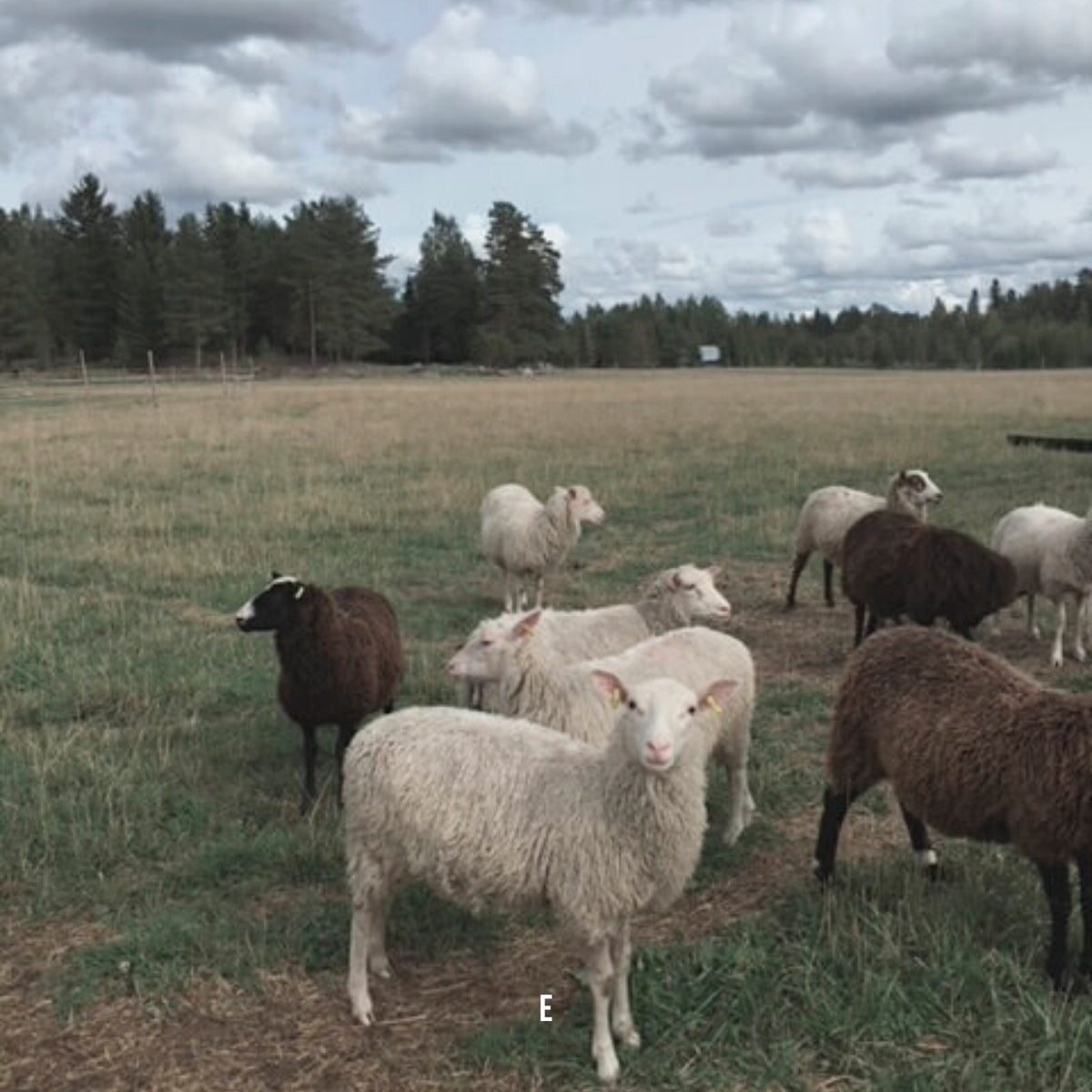
Non-treated natural materials
100% Finnish Lambswool
Such as in the case of several raw-materials, toxic chemicals can be applied in the processing of wool. This happens especially in the biggest wool-producing countries such as China, Australia, and New Zealand where industrial farming methods are in use. In industrial farming, leach animals are poisoned with chemicals and painful mulesing is conducted. Factory farmed sheep herds contribute towards erosion and destruction of the diversity of nature.
94,2 million € worth of wool products are imported to Finland annually (Customs database). However, we have plenty of good domestic wool, since Finnish lamb wool is a meat production by-product. 346 000 kg of Finnish lamb wool is extracted per year, from which only 100 000 kg is utilized, mere 30% of the potential amount. This is as , unfortunately, the price the sheep farmer receives from the wool is so low that 70% of it ends up being disposed rather than applied in further production (Luke Uusivu-hanke).
Non-industrial sheep wool production is considered a more sustainable solution. Favorable living conditions translate into higher quality lamb wool. The Finnish lamb race resembles the wool sheep and therefore its wool has its own unprocessed, natural feel. Due to our Nordic climate, there is no need for painful mulesing practices. To avoid erosion the sheep in Finland are free to graze in summer and house during harsh winters. We do not use pesticides to control parasite infections. Our legislation secures animal rights and curbs the use of chemicals. For this reason, we have selected it as our main raw material.
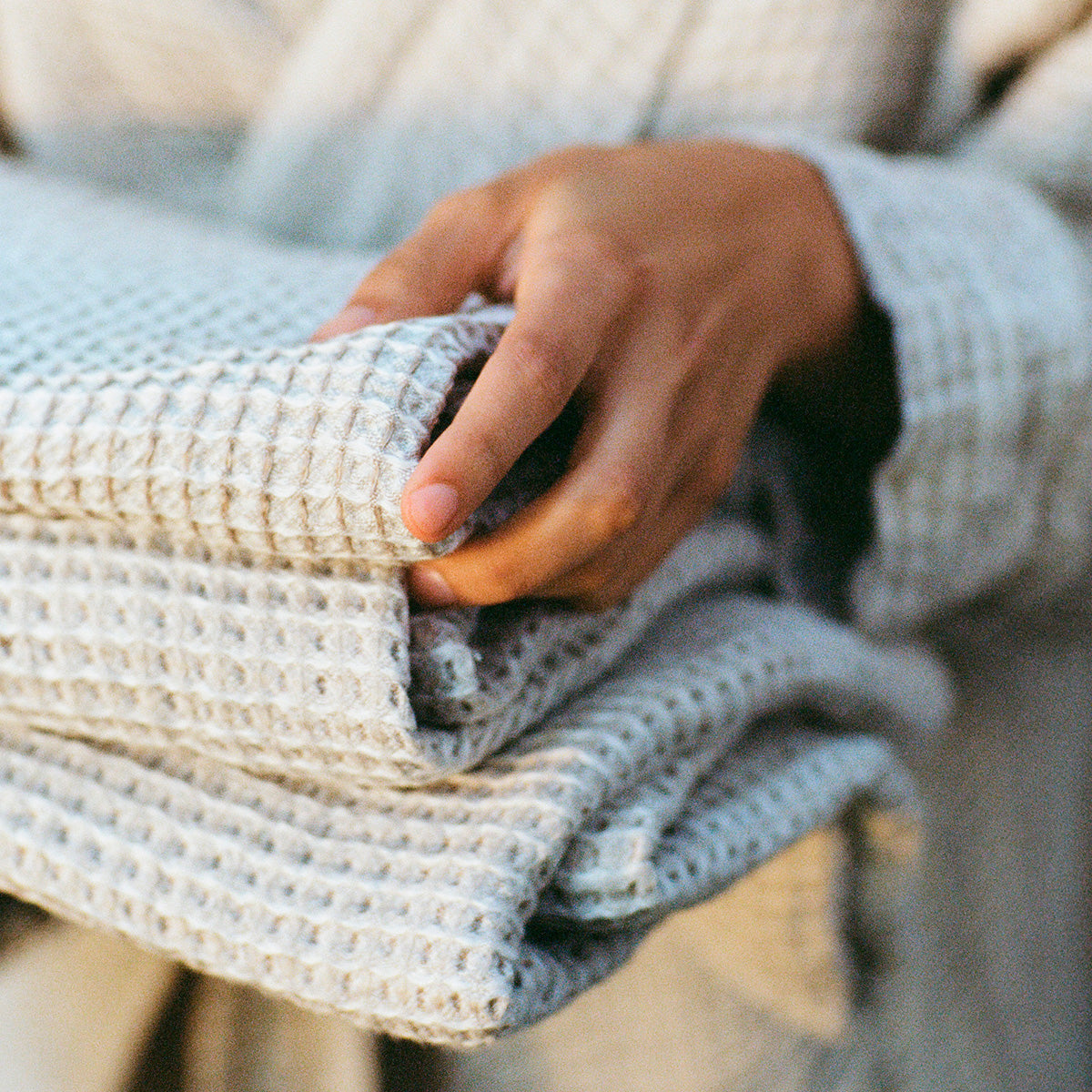
Use of 100% european linen, Öko-Tex 100
Linen is one of the most sustainable materials. When undyed (i.e. processed without chemicals or intensive dyes) it means no water pollution is made. Linen is made from flax plants, a plant which grows without the need for fertilizers or pesticides. This means it is a renewable resource, one that is fast growing and can be produced without damaging the environment. Moreover, linen is a timeless and durable material whose beauty lies in its delicate sheen and luxorious feel.
The linen we use is grown in Europe according to the Öko-tex 100 standard. It ensures that the product does not contain harmful substances to the environment or health.
The natural dyed linen is woven in Porto, Portugal, which is known for its tradition and expertise in weaving linen fabrics. The Öko-tex standard
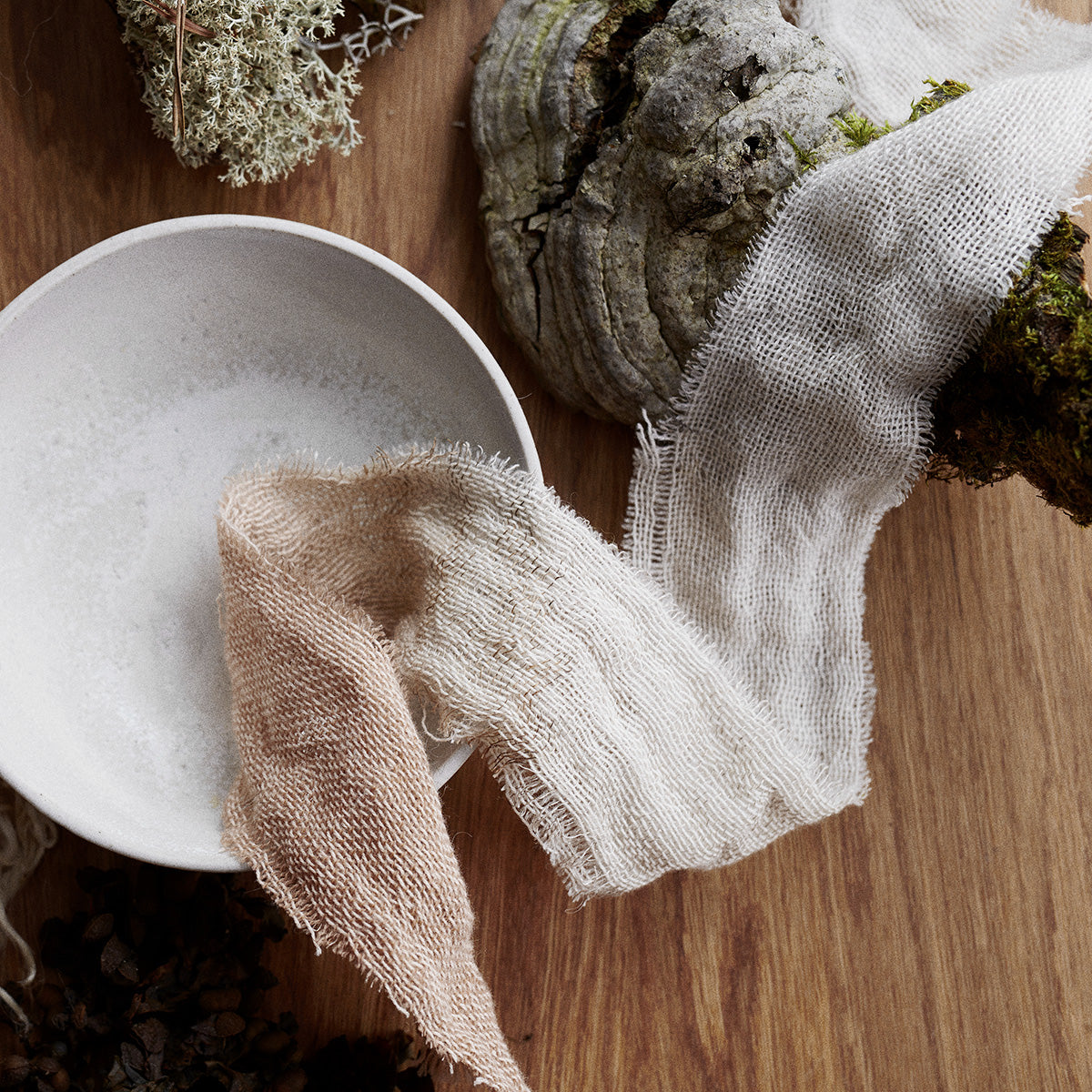
Natural colors and plant-based dyeing
Synthetic textile dyeing causes about 20% of global water pollution. We wanted to find ways to dye textiles in a more environmentally friendly way. Natural dyeing is an innovative way of dyeing that uses a reduced amount of water and energy, while using natural resources and no synthetic dyes. That's why we only use plant-based dyes in both our wool and linen fabrics. We also minimize the bleaching of linen yarn, which is normally needed in industrial yarn dyeing.
Our textiles are plant-dyed with vivid shades and natural colors that can always be combined with each other. Through this you can easily create multiple harmonious combinations from our products
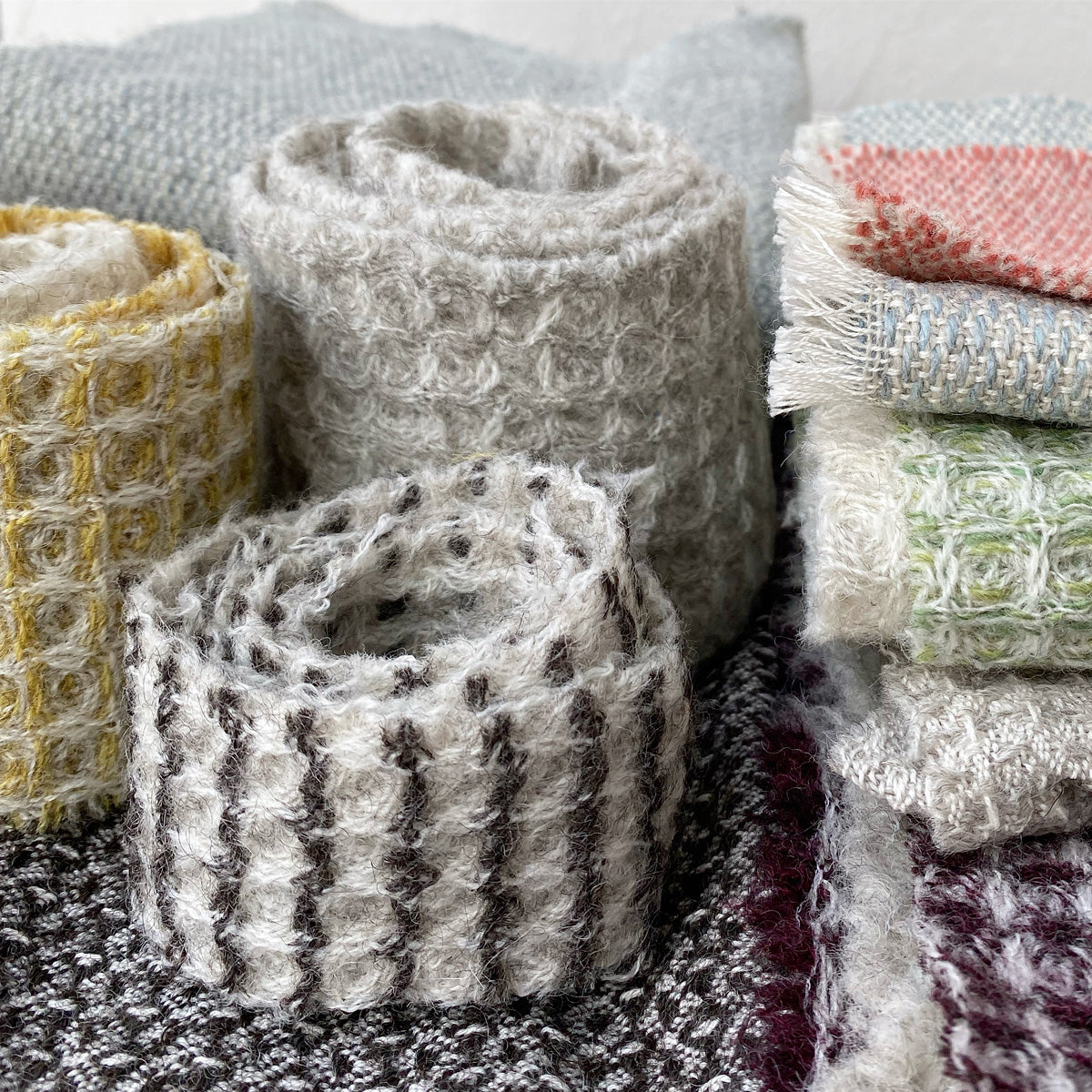
Zero Waste
We manufacture our products to standard measurements, due to this minimal waste is generated in the production process. We consider the cutting edge of the knitted to measure fabrics is also considered as cutting waste.
We use of surplus scraps and cutting waste in our product design. This waste is used to create our ZERO - WASTE collection. This collection includes unique patchwork pillows and blankets made from surplus scraps that can be combined with our other textiles.
From the cutting waste of the 100% wool felt, we have already produced custom stools and rugs

Up-cycling
100% wool and 100% linen makes a good raw material even when it's reused. Our goal is to bring our own textile waste into something higher value. We are currently investigating the possibility of the return of used wool products..

Towards carbon neutrality
All our climate emissions calculated in 2019 are compensated through the Finnish carbon footprint compensation company CO2esto. Our aim is the year-to-year reduction of emissions, which we track with the use of indicators. The emissions we cannot reduce ourselves, we compensate.
The lion’s share of our carbon footprint comes from the raw materials purchased. Other significant sources of emissions include the shipping of raw materials and products as well as business travels.
*Our carbon footprint is however still overestimated. The calculation tools applied do not take into consideration that we use GOTS-certified wool and Finnish lamb wool. On the contrary, a standard rate is applied to all emissions from wool, despite of its origin or how it has been processed.
We are working on to reduce our emissions and we will keep you informed on our blog.
Every one of us generates emissions, which have to be cut throughout! We are keen to learn more about sustainability. Let us know if you have ideas on how to make the world better through minimizing our emissions.
info(at)bonden.fi

